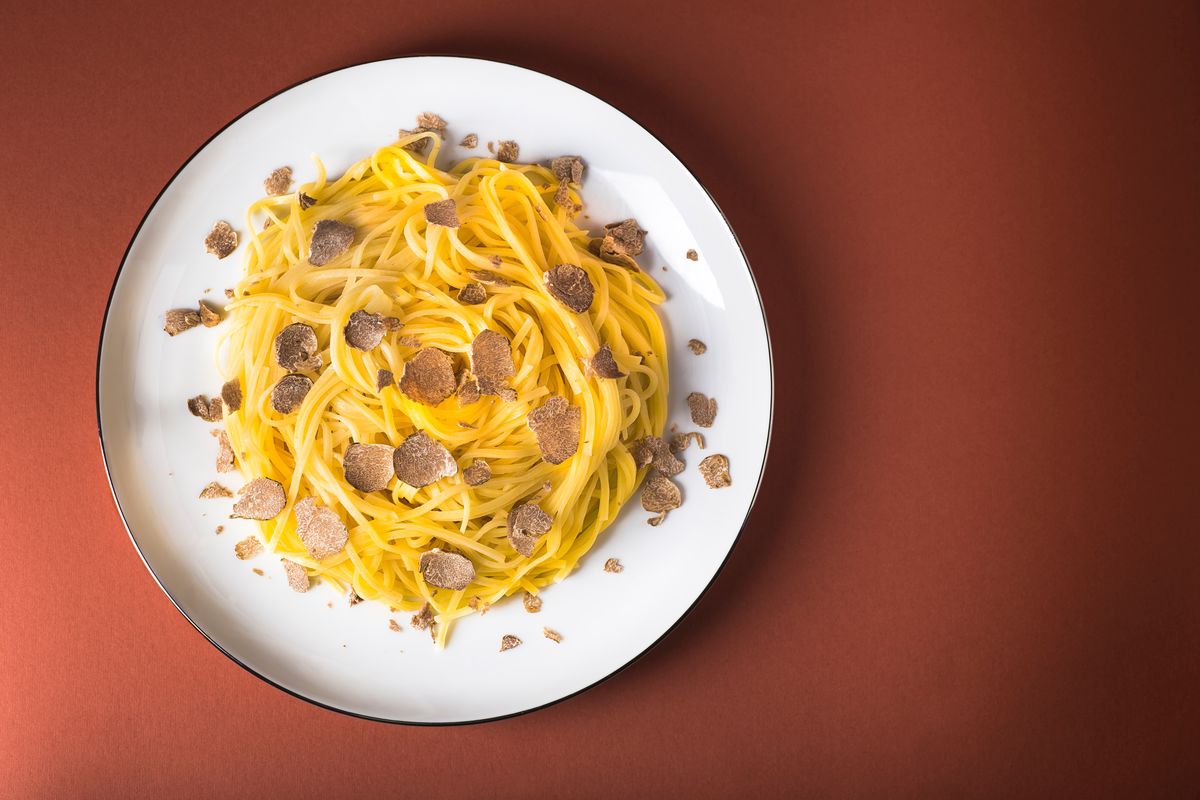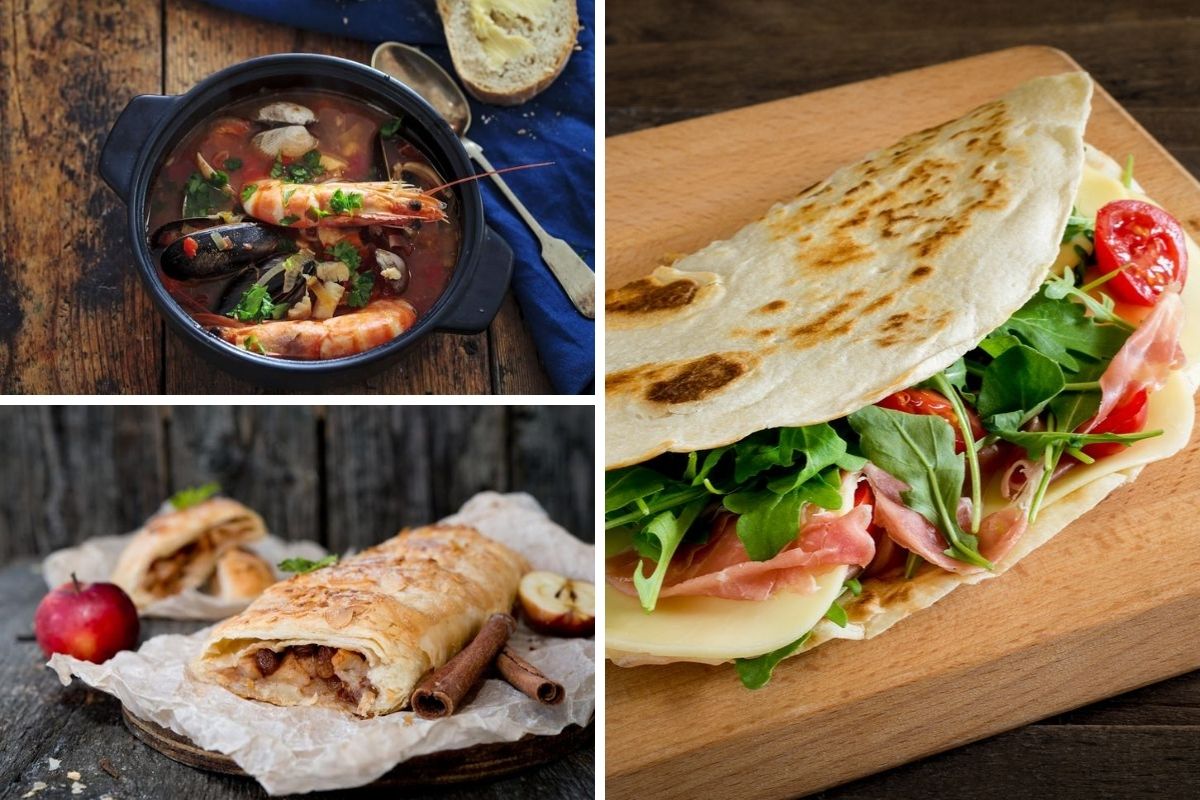Recipes
Tajarin with white truffle


White truffle tajarin are a refined first course typical of Piedmontese culture, ideal for any occasion and easy to make.
Today we are preparing some delicious tajarin with white truffle, a recipe with a refined flavor that will surely amaze all your dinner guests. For this recipe we will prepare tajarin from scratch, the name with which tagliolini are called in Piedmont, and which we will season with a simple butter sauce flavored with white Alba truffle, a product of Italian excellence, directly from the Piedmontese Langhe. Try preparing this delicious truffle pasta, simple to make but very effective!

Preparation of truffle tajarin
- Start by preparing the fresh pasta. Pour all the flour onto a work surface and make a hole in the center (the fountain) where you will pour all the egg yolks .
- Start kneading first with the fork, then by hand, until you obtain a soft and homogeneous dough. At the beginning the dough will be quite hard and difficult to work with. If you continue to knead it does not become softer, add more egg yolks or a drop of water.
- Once you have obtained your dough, wrap it in a cloth or cling film and let it rest for 1-2 hours in a cool place.
- Once the resting time has passed, take the dough ball and roll it out with a rolling pin or with a special machine. The dough should be as thin as possible .
- Cut many rectangles of about 30 cm in length and let them rest on the floured work surface for a few minutes.
- Let's go cut the dough. To do this, overlap 2-3 rectangles after having floured them well so that they do not stick together.
- Roll them up from the short side and cut the tajarin as thinly as possible (maximum 2-3 mm thick ).
- After cutting them, unroll them and flour them again, separating them well and leave them aside for the moment. Proceed in this way with all the pasta rectangles made.
- Continue the dish by cleaning the truffle, brush it with a kitchen brush or toothbrush, so as to remove the earthy residues on the surface. To do this you can also pass it under a stream of water, but remember to dry it immediately with a clean cloth.
- Place a pan of water and bring it to the boil, then add the tagliolini and cook for 1-2 minutes after it starts boiling again .
- In a separate pan, melt the butter well, then directly pour in the drained al dente pasta.
- Stir well, adding a ladle of cooking water if necessary and serve.
- Finally, grate 6 to 10 g of white truffle per person onto each plate before serving.
And here is a video recipe for preparing the dish from scratch, in this case preparing the pasta with both egg yolks and whole eggs:
And if you liked this typically Piedmontese pasta and want to discover other recipes with white truffles, also try our truffle fondue : delicious and ideal for a convivial dinner!
Conservation
We recommend consuming the first course of pasta with truffle at the moment . We do not recommend storing in the fridge or freezer.
History of the dish
We have no evidence that can date the origin of this first pasta dish, made with characteristic local elements and which is now known throughout the country. There are two significant elements: the tajarin and the white truffle. The former are egg pasta which is much yellower than classic fresh pasta, due to the presence of egg yolks . Purists, in fact, seem to affirm that this format was, and still is, prepared simply using egg yolks. However, there are different schools of thought on the matter, in fact there are those who prepare them with both yolks and whole eggs . The flour used is also, as per tradition, the classic wheat flour, however some make it with a percentage of durum wheat semolina.
Let's now move on to the white truffle of Alba , the most famous and renowned in Italy and probably also throughout the world. The nomenclature of this product arrived in 1929 and, since then, the white Alba truffle has increased its fame and value year after year.
The marriage between these two local elements was inevitable, with the addition of a small amount of butter to bind everything together and make the first course irresistible.
Riproduzione riservata © - WT












